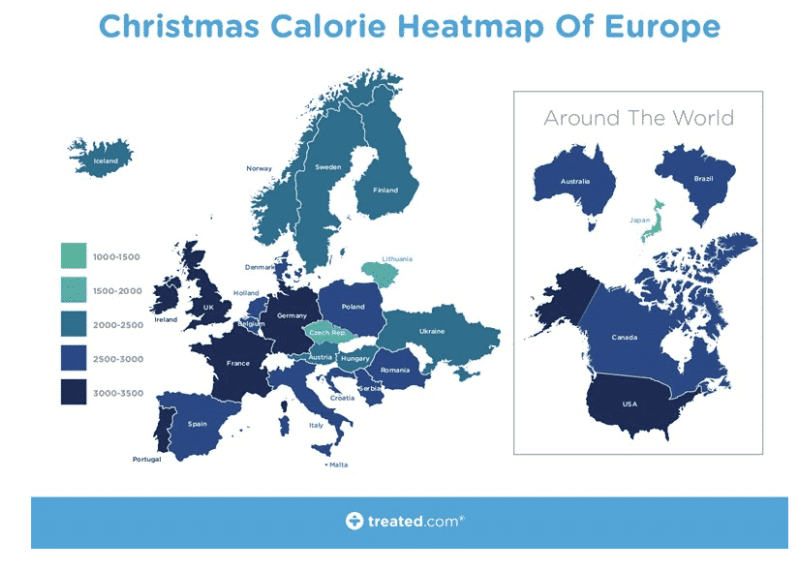Turn to the Internet for answers on ‘how to build links’, and you’ll be swamped with around 260 million search results. It’s fair to assume that around 80% of this information will cover familiar ground ..
..in which case it’s highly probable that you’ve marked the tactics for future use for your personal business or client portfolio. Even better, you may be currently seeing results with one or more link-building processes combined.
Having spent a number of years devising link-building and acquisition strategies for both B2B and B2C companies in the UK, Asia, USA and Australia, I know the limits that over-utilized link-building tactics have and how short-lived they can be for any strategy, which has led me to adapt and invent fresh ideas that involve creating content. So, in this article, I’ll draw on first-hand lessons to describe the tactics that have worked for me and how they can be set up.
So what are the upcoming trends for 2017? The onus for marketers has, and always should be, to choose quality and relevance every time. Steer clear of outdated tactics like low-level guest blogging that takes an age to generate results which Google won’t reward you for.
Instead, place a premium on developing content-led items that can provide the user with a richer experience whilst reinforcing your brand's core values positively. It’s about building your brand as much as it is building links. One assists the other. Here are some tried and tested techniques to consider as part of your long-term strategy.
1. Data Visualisation
Therefore, The link targets data visualisation, a traditional public relations practice for the digital reader. The results I have seen through building data-led content have exceeded my expectations tenfold. This technique is how I managed to build relationships with key media influencers, learn about producing viral content, and have work published on some of the world’s leading websites, including BBC, ITV, Fox News and The New York Times. In summary, digital PR is the future of high-tier link acquisition. notbreadwinnersbreadwinnersI’m mainly referring to static and interactive maps and data tables here, which I have found to be the biggest bread winners in attracting links. Not only by volume but by link quality, too, which should be a high priority in all instances. Data visualisation requires content execution to highlight the findings of the research you have undertaken. When presented to offer new insights and trends, this creates a newsworthy aspect that media influencers and industry figures want to report on. The link targets are, therefore, news websites and topical blogs, which can be reached by manually pitching in your story.
To set this tactic up, you’ll need to dedicate a page to your site's research independent of where e-commerce and commercial information is displayed. Choose a bespoke landing page or a blog URL. A designer or developer should be called upon to visualise the findings. If the recipient of your email pitch decides to cover the story, there’s a strong chance of them linking out to the URL of your content or the brand URL itself.

2. Authorship profiling
This aspect of link-building involves creating unique profiles on authoritative websites that rely on fresh and insightful editorial content. Some of the major players out there, such as Huffington Post, Lifehack.org and Business Insider, belong in this category and can be counted on as target sites to build links from. If your editorial content is accepted and the link you have included remains intact, then you have struck gold.
Aside from the PR-focused activity of data visualisation, author profiling is up there with the highest-performing tactic for earning links of high quality.
In order to nail this, there can be no obvious call to exploit the platform for personal gain. The publications mentioned aren’t short on pitches for contributions from writers so naturally, they will reject 90% of articles sent for their attention. Articles that remain neutral, offer the reader insightful information and adhere to the editor’s guidelines stand the best chance of going live. My advice here is to find the common ground between your brand and the topics of the website you’re submitting to and produce a long-form article that presents you as an authority in your chosen field.
3. Skyscraper Pages
Also known as aggregators or ultimate lists, according to experts like Sujan Patel and Brian Dean, skyscraper pages are comprehensive guides that can bring in substantial links and elevate rankings. The overall aim is to create a bespoke resource hub for useful content in any given industry using multiple types of information available on the web. An example may be Vegetarian resources for travellers in Australia, which can be broken down into extensive subtopics. The beauty of this tactic for link building is that the hub can be updated manually whenever new information is discovered. People who find the packaging of your information to be useful will react by liking and sharing it; those who write for a living may link out to it.
To set this up, you must work with a web developer and create a framework where your content will sit. You may also want to dedicate a team to researching and collecting information that will form the basis of the resource hub. For extra exposure, pitch it around to influencers.
4. Co-Branded Content
Create written, visual or rich media content in collaboration with target website(s) to achieve links and build a solid reputation and social engagement. A typical example of a co-branded content piece may be a business working with several bloggers or experts to produce a collaborative infographic or video series. Each partner included in the project will be asked to publish the content on their site and through their media channels.
The success lies with the types of websites your brand is looking to partner with – check if they can link to your website through a blog, news outlet or landing page. Identify a shortlist of similar websites or influencers that fit the profile you are looking for to maximise the end result, generating multiple links back to your site. Charity and non-profit websites are worthwhile link targets as they have a clean back-link profile and may not have the resources to produce content in-house. Start your task by writing a brief outline to share with all parties. Make your intentions clear and keep a strong line of communication open so that you can keep track of progress from start to finish.

5. Scholarship Programs
If your company is in the habit of supporting a good cause, initiating a scholarship program may be a worthwhile investment to generate high-quality links to your website. The days of paying or bribing for links are well and truly over for any reputable company – however, no links are free. A cost is assigned to each link earned through other means, which is one example of how that happens. For this particular tactic, the link targets are set in stone; they are websites that publish the listings of active scholarship programs and are usually within the education or government sectors.
The main factor here is the fee you can cover for giving away a free scholarship, which could amount to anywhere from $1,000 to $10,000. This is your prerogative. Once agreed, brief them on setting up a new landing page where you will write up the scholarship program information, such as how to enter, criteria, purpose, etc. If possible, include a contact form to capture users’ details so the appropriate scholarship winner can be notified reasonably. Then, refer to your list of target sites that publish scholarship program links and submit your URL with any additional copy if necessary.
Conclusion
A simple place to start is by examining your current back-link profile and categorizing the links to your website by quality score and relevance. Then, peek at the backlink profile of businesses competing for your keywords (direct) and those sites that publish similar topics to your brand (indirect) and compare the results.
Undoubtedly, the larger the brand, the more opportunities you will find to target for links and content opportunities. Make a link-building wish list for sites you want to earn a link from and assign an individual strategy for each. Set out goals, a rule for how to measure them and be realistic with your expectations.
Written by
Roy Zhai





